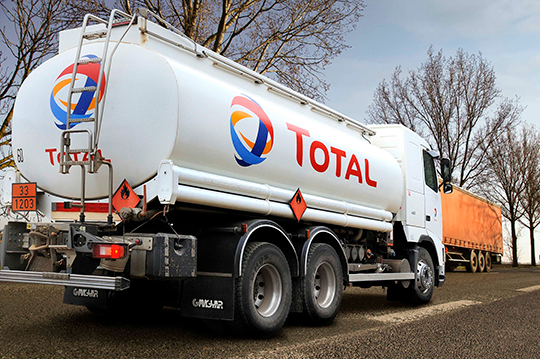How Have Fleet Operations Changed?
Over the past number of years, there has been substantial changes in regulations that have not only impacted the fleet industry, but the automotive sector as a whole. We have seen the introduction of various new engine oil specifications, strict new emissions standards and guidelines that look to reduce everyday pollutants, all the while moving towards improved fuel economy.
In today’s market, the biggest issue faced by fleet operators is downtime. Vehicles off the road lead to a loss in revenue and with the numerous operating conditions and business pressures currently affecting the industry, it can be catastrophic. Companies that are successful in this segment build their operation on a number of core principles such as high levels of reliability, efficiency and being competitive, but at the same time reducing spend. For fleet managers, one of the most significant operating costs is fuel. A truck can notch up thousands of kilometres a month and even marginal gains to fuel economy can make a big difference to a companies spend. So, how can fleet companies make the most of the new oils? Let’s take a look at some of the key factors that help your business reduce your fuel costs
Fuel Economy Lubricants
When we think of fuel economy lubricants the first thought that probably comes to mind is price. A fully synthetic, low-viscosity oil that is designed to save fuel must be expensive? This is one of the key questions that a fleet manager is asking, especially when the mineral oil that they’ve long been using has never given them any problems before and is priced reasonably. It’s extremely important therefore, to be able to explain and highlight how fuel economy engine oils work and the long term benefits they will bring to both your fleet and your bottom line.
Fuel economy lubricants have been formulated so that the viscosity of the oil is reduced without compromising protection. Viscosity is a lubricant’s resistance to flow. The thinner the oil. The less viscous its drag is. This means that the engine oil circulates around the engine faster during a cold start, reducing friction and wear instantly. If we look at the traditional SAE viscosity rating for diesel engines in trucks, we will most commonly come across an E7 15W-40, a far reach from a 5W-30 heavy-duty diesel engine oil. Synthetic base oils, additives such as viscosity modifiers and technological advancements mean that engine oils can be formulated in ways that we would not have considered many years ago. With these synthetic 5W-30 engine oils, the 5W indicates that the oil will stay thin in low temperatures (cold starts) with the 30 showing that it will also stay thin at high temperatures compared to a 15W-40.
Engines spends the vast majority of their time operating at high temperatures, therefore second number in the viscosity rating in this case 30) has a much bigger influence on fuel economy. What can be a problem is that some vehicle manufacturers refuse to authorise oils that are too thin at high temperatures. As we have discussed. thin oils leave a thinner film on wear surfaces such as camshafts and bearings: if it is too thin the film shears. To counteract this, synthetic base oils are designed to give greater film strength compared to mineral oils operating in these high temperature, high shear (HTHS) conditions.
This need for sufficient engine wear protection at high temperatures means ACEA sequences include an HTHS viscosity limit. This limit essentially restricts oil to high-temperature viscosity ratings to no lower than 30 for fleet engines, which means that the fuel efficiency potential at normal operating temperatures is capped. With the viscosity at a fixed rate for high temperatures, an emphasis is put on low-temperature viscosity. Going lower would also help here but the net benefit is dependent on the how often cold starts occur. In Ireland, it would be extremely rare for an engine to need to deal with consistent cold starts.
So, what does all this information mean? It highlights that the economic benefits of fuel economy engine oils are variable but advantageous. On average, economic gains of approximately 2.0 to 4.0% are normally quoted by users. It is very important to remember that not all such oils are created equal and results on the baseline used for comparison. In percentage terms, gains are usually higher when a vehicle is stationary. With the engine idling because there are no aerodynamic or rolling resistance losses, so a reduction in engine losses count for more. Low ambient temperatures and cold starts also heighten the benefits of thinner oil as it protects the engine faster due to its quicker flow.
There are a lot of different circumstances to think about when deciding to switch to a fuel economy oil. It is extremely important to remember that today’s engines have a wide range of needs when it comes to lubrication compared to past generations. Before choosing an oil, always consult your owner’s manual or speak to the OEM manufacturer to find out not only the suitability but the expected performance levels when it comes to the right engine oil. Taking a risk when downtime is the biggest enemy to cash flow means that using the right engine oil and lubricants is integral to your operation.

Extended Drain Intervals
Longer drain intervals are a key differentiator to fleet managers. A variety of costs drop as service periods decrease along with labour costs, but the biggest plus is a reduction in downtime. But what factors influence drain interval periods? Most manufacturers recommend that the oil is changed after approximately 60-70,000km operating within Ireland. This can be reduced to 30-40,000km if the truck is operating in severe environments such as short-distance urban or construction work. It can extend to maybe 80-100,000km on long-distance and lighter duties but again proper consultation of the owner’s manual is required. Fuel consumption can be a key indicator when it comes to drain intervals. Higher than average fuel consumption would usually align with tougher demands on the oil.
One of the main reasons that engine oils degrade is oxidation. This is the continuing acidification and breakdown of the oil. When new oil is put into the engine, it is alkaline in order to fight the acidity of the combustion. Once an oil’s reserves of alkalinity start to run out, its ability to resist engine wear is greatly reduced. Delaying an oil change at this stage is extremely risky but one many fleet managers take due to the perceived savings on changing the oil. Semi and fully synthetic base oils are better at fighting oxidation than mineral base oils, explaining why truck manufacturers specify that synthetic-based E4 and E6 oils are crucial if fleet managers want to take drain intervals out to the maximum, sometimes as high as approximately 120,000km if the right conditions are met.
For the most part, synthetic base oils have a much higher viscosity index than mineral oils. That means they are more resistant to both thinning at higher temperatures and to thickening at lower temperatures. As discussed above, this resistance is also extended due to the use of additives such as viscosity modifiers. They stay closer to their original viscosity for longer, stretching their lifespan. It is up to the operator to work out whether longer drain intervals justify the premium cost for E4 and E6 oils, accounting for the savings on filters too. As a rule, extended drain intervals only make real sense if they delay the change by at least one scheduled safety inspection.

Oil Analysis
One of the most important things you can do when looking at your current lubricant is oil analysis. If you are looking to extended your drain intervals in any sort of capacity, it is extremely important to use some form of oil sampling to actually judge how far is you can push out an oil change without it affecting the health of your engine. Taking a sample will provide a a number of detailed reports on oil life, including how much oxidation has occurred, as measured by the TBN (total base number) to name but a few. Other than planning maintenance operations Oil analysis has a number of benefits including:
- Helping to reduce operational costs
- Forecast and plan maintenance operations
- Increase the lifespan of your equipment
- Improve reliability and performance
- Optimise oil change frequency

Total Rubia 9900 FE
Total Rubia 9900 FE 5W-30 is the latest in synthetic, E6 lubricant from the Total fuel economy range. This cutting-edge engine oil is suitable for use in heavy-duty diesel applications. Total Rubia 9900’s low SAPS technology is specifically adapted to the latest generation of diesel engines equipped with post-treatment systems, such as diesel particulate filters (DPFs). Especially suitable for most Euro 6 vehicle manufacturers, Total Rubia TIR 9900 FE 5W-30 allows managers to cover a fleet of mixed brands with a minimal number of products.

Benefits
- Due to high quality synthetic base stocks and high-performance additives, Total Rubia TIR 9900 FE 5W-30 exhibits exceptional performances in thermal stability, and easier cold starts.
- Detergent, antioxidant and anti-corrosion additives contained in help it to reach extended oil drain intervals (defined by most manufacturers) and reduce maintenance costs.
- Outstanding detergent, dispersant and anti-wear properties keep the engine clean and allow effective control of soot, sludge and piston deposits.
- Excellent piston cleanliness performance affords effective protection against bore polishing and cylinder wear.
- Advanced low SAPS formulations help prevent the clogging of the diesel particulate filter (DPF) and extends the post-treatment system durability.
- Its Fuel Economy technology helps save 1% fuel on average, compared to an SAE 40 grade reference lubricant. This value can reach 3% if used in combination with Fuel Economy transmission lubricants.
To find out more about Finols range of fuel economy lubricants, call 01-455 5484 or talk to one of our dedicated technical team members at www.finol.ie/contact-us.

